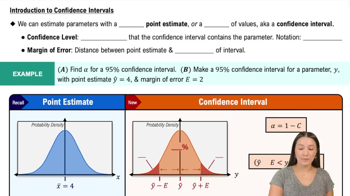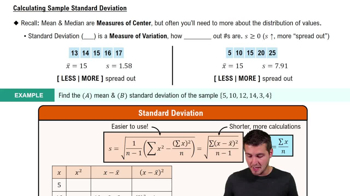Here are the essential concepts you must grasp in order to answer the question correctly.
Sample Size Calculation
Sample size calculation is a statistical method used to determine the number of observations or replicates needed in a study to achieve a desired level of precision. In this context, it involves using the formula that incorporates the desired confidence level, the population standard deviation, and the margin of error to estimate the mean age of moviegoers accurately.
Recommended video:
Sampling Distribution of Sample Proportion
Confidence Interval
A confidence interval is a range of values, derived from sample statistics, that is likely to contain the population parameter with a specified level of confidence. In this case, a 98% confidence level indicates that if we were to take many samples, approximately 98% of the calculated intervals would contain the true mean age of movie patrons.
Recommended video:
Introduction to Confidence Intervals
Population Standard Deviation
Population standard deviation is a measure of the amount of variation or dispersion in a set of values. It is denoted by sigma (σ) and is crucial in sample size calculations, as it reflects how much individual ages of moviegoers deviate from the mean age. A known standard deviation allows for more accurate estimations of the required sample size.
Recommended video:
Calculating Standard Deviation






